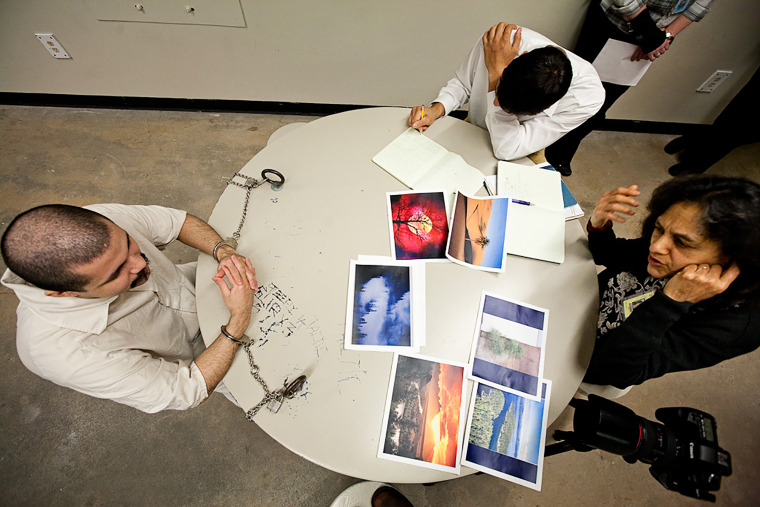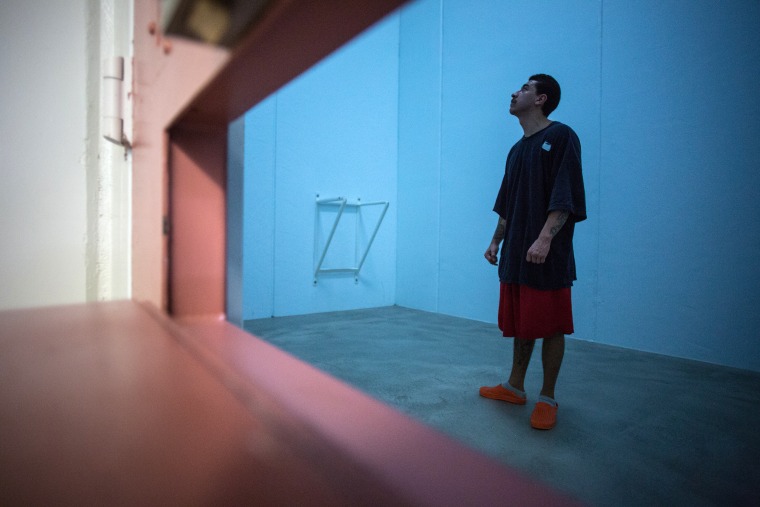Prisons are notoriously stressful places for inmates and staff alike — notoriously dangerous, too. Nineteen percent of male inmates in U.S. prisons say they've been assaulted by other inmates, and 21 percent say they've been assaulted by prison staff. But a provocative new study suggests that prisons could be made safer and more humane for all simply by harnessing the power of nature.
Previous research has shown that people experience significant reductions in psychological stress when they get more exposure to nature — either directly through walking outdoors or indirectly by gazing through windows or at photographs or videos. That’s not surprising, given that humans evolved to live in a world of streams and fields, blue skies and starry nights.
Dr. Nalini Nadkarni, an ecologist at the University of Utah in Salt Lake City, began wondering years ago if exposure to the natural world could bring similar mental health benefits — along with reductions in violence — to prisoners in solitary confinement. So she arranged to conduct a study at Snake River Correctional Institution near Ontario, Oregon.
Inmates in solitary confinement at Snake River spend 23 hours a day in cells with no windows to the outside world; their outside-the-cell time is spent in a concrete-enclosed exercise room.
But during the course of Nadkarni’s one-year study, half of the 48 prisoners in a solitary cellblock got to watch nature videos of their choosing projected on a wall in the room during the 45 to 60 minutes they spent there each day.
The videos projected in what inmates called the "blue room" included imagery of forests, beaches, and Earth viewed from space. Inmates in the other half of the cellblock took their exercise time as usual, without being exposed to any nature videos.
What happened? According to surveys and interviews conducted at the conclusion of the study, 43 percent of the inmates who were allowed to watch the nature videos said the videos soothed them. “When I first went into the blue room, I was like ‘wow, how beautiful this world is,’” one of the inmates said.

Prison staffers said the inmates appeared calmer after watching the videos. Two said they thought the videos had reduced self-inflicted injuries among the inmates. And 26 percent fewer acts of violence were recorded among the inmates who had watched the videos compared with the other inmates.
“What we learned from it is that nature benefits everyone, no matter where they are,” Nadkarni says of the study.
The conclusions of the pilot study, published September 1 in the journal Frontiers in Ecology and the Environment, were limited by several factors, including the small number of inmates involved. But other prisons are already experimenting with blue rooms of their own, Nadkarni says. The State of Florida has them in three facilities, for example, and a women’s prison in Portland, Oregon offers a nature channel on the small TVs installed in inmates’ cells.
Nadkarni and her team are planning larger studies to test which factors in the intervention were most important. Would any videos help? What about nature soundtracks?
And there are more ambitious ideas. Nadkarni’s work is part of a larger effort to enrich prisoners’ lives through gardening, conservation projects, and science lectures. “If I had my druthers, I would see prison as a place of education,” Nadkarni says.
Dr. Tierney Thys, a marine biologist at the California Academy of Sciences in San Francisco and co-author of the new study, believes large wall-sized projections would be even better for displaying nature scenes to all inmates and staff, if it could be done economically. In minimum-security settings, it might even be possible to let inmates experience nature with low-cost virtual reality gear.
Brad Brockmann, executive director of the Center for Prisoner Health and Human Rights in Providence, Rhode Island, is enthusiastic about Nadkarni’s work and the stress-reducing, violence-limiting potential of nature imagery. As he puts it, “Anything to humanize the environment is going to pay huge dividends.”

